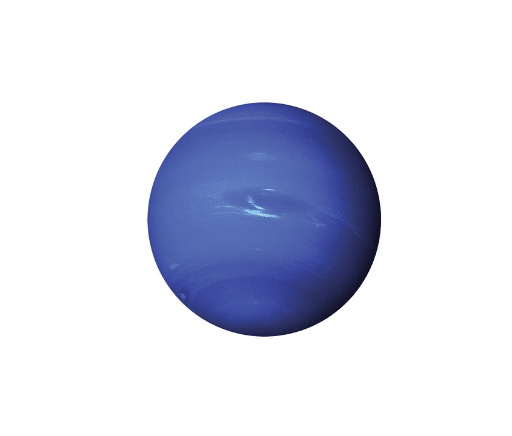Embark on a fascinating adventure through the solar system without leaving Earth! Your journey begins at Mont Caly, where the Sun is symbolised by a metallic structure.
Thanks to a scale reduced to one billionth, the planets and their actual distances are accurately represented, allowing you to explore the universe as you walk. This accessible and gently sloping trail offers a fun and educational experience, with breathtaking views of the mountains.

| Short route | Long route |
| Duration: approx. 2 hours Distance: 5.7 km | Duration: approx. 3h30 Distance: 8.9 km |
Neptune
Neptune is an icy giant planet, composed mainly of gas and ice. Its blue colour comes from the methane in its atmosphere. It has a tilt similar to that of Earth, allowing it to experience seasonal cycles during its revolution—although on Neptune, each season lasts more than 40 years (CNES). Its name comes from the Roman god of the oceans, Neptune (known as Poseidon in Greek mythology).

| Caractéristiques | Neptune | Terre |
| Diamètre | 49 250 km | 12 750 km |
| Rapport de masse | 17,1 | 1 |
| Rapport de gravité | 1,14 | 1 |
| Distance de soleil (UA) | 30,1 | 1 |
| Inclinaison / Axe de rotation | 28,3° | 23,5° |
| Période de rotation | 16,1 h | 1 j |
| Révolution autour du soleil | 165 j | 365 j |
| Température max | +201°C | +58°C |
| Température min | -220°C | -89°C |
| Lunes | 14 | 1 |
Eighth planet from the Sun, Neptune follows the same general principles of formation as the other gas giants.
The creation of Neptune dates back to the formation of the solar system, around 4.5 billion years ago. According to the widely accepted theory, Neptune formed from a disk of gas and dust surrounding the young Sun, known as the solar nebula. Here is an overview of Neptune’s formation process:
Formation of the protoplanetary disk: At the beginning of the solar system’s formation, a vast amount of gas and dust began to collapse under its own gravity, forming a protoplanetary disk around the young Sun.
- Accretion of material: Within this disk, small dust particles attracted each other and merged to form larger aggregates called planetesimals. These planetesimals gradually clumped together to form protoplanets, the precursors to planets.
- Planetary migration: During this formation period, developing planets underwent migratory movements due to gravitational interactions with the protoplanetary disk. These movements influenced the positions and orbits of the forming planets.
- Formation of the planet: Over time, material from the protoplanetary disk accumulated around the growing protoplanets, shaping their internal and external structures. Neptune continued to develop until it reached its current size and cleared away any excess surrounding gas.
- Cooling and stabilisation: Once Neptune reached its final size, it gradually began to cool from its initial formation phase, and its outer layers stabilised.
Thus, the creation of Neptune was a complex process that took millions of years to unfold, similar to the formation of all other planets in the solar system.
Today, Neptune remains a fascinating planet that continues to intrigue scientists with its unique characteristics and its role in the dynamics of the solar system.
For more information, you can visit the following websites:
1. https://cnes.fr/fr
2. https://www.esa.int/Space_in_Member_States/France
3. https://www.nasa.gov/
